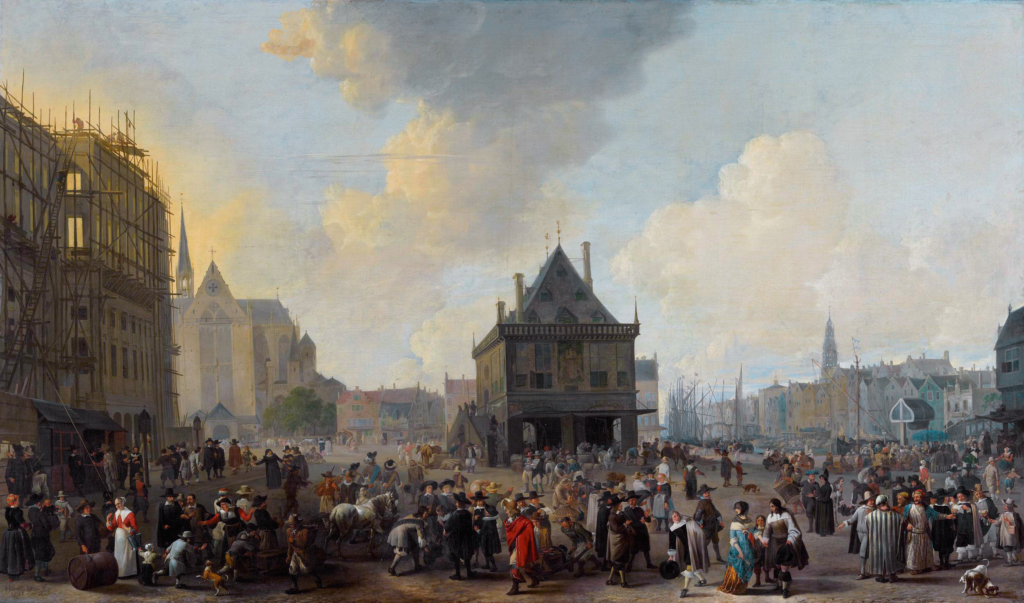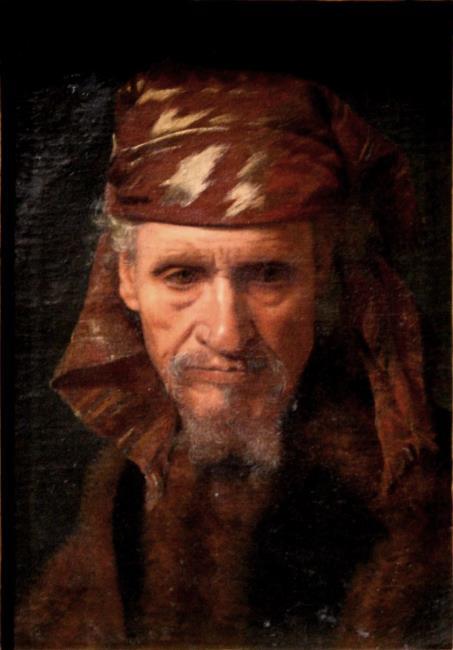Mark Ponte
In 1656, the city of Amsterdam is more powerful than ever. The Republic has convincingly defeated England in the First Anglo-Dutch War and in 1655 the gigantic new City Hall is inaugurated. Merchants from all over the world come to the city to trade at Hendrick de Keijser’s renowned stock exchange. Some bring enslaved servants, not only merchants and ship captains from Dutch ‘colonies’ in South America and Indonesia, but also from the Mediterranean. Like Joan Elias, from Aleppo.

On Wednesday 22 November 1656, eighteen-year-old Huvedi Dimitri appears before Amsterdam notary Adriaen Lock in Warmoesstraat. Dimitri is originally Polish, but he has been living in slavery in Turkey for eight years. He does not speak Dutch. So Jan Pietersz (who signs as ‘Joao Pedro’) and Jurgen Pauwels are called in. Pietersz and Pauwels speak both Turkish and Dutch and act as interpreters. Furthermore, Magerdiets Aseroen, Caplaen Keijserlie and Mirse Sulfalie, ‘all Armenian merchants’, are present at the notary’s office.
In the presence of all these witnesses, Dimitri recounted that he had been enslaved in the Ottoman Empire for about seven years bevore he was sold for 140 ‘pieces of eights’ (Spanish sillver dollars) to merchant Joan Elias of Aleppo some 15 months ago in Smirna (now Izmir). Smirna was an important multicultural port city in the Ottoman Empire, Aleppo one of the most important cities of the Levant in the same Empire. The Syrian merchant had then brought the Polish boy with him to Amsterdam ‘and taken with him (…) to serve him’.
Huvedi Dimitri explained all this at the request of Joan Elias, the merchant who had bought him as a slave. What was behind this? Huvedi’s explanation shows that he heard that there was no such thing as slavery in the city of Amsterdam. He had spoken to the Greek merchant Augustus de Miter, ‘de welcke hem (…) wijs gemaeckt & geseijt heeft dat hier een vrij lant was’ (‘who made him (…) aware and told him that it is a free country here’) , and that he was therefore not obliged to stay with Elias, serve him, and leave with him back to Smirna, where Elias would thus sell him again (‘for slaef soude vercoopen’).
Augustus the Miter actually insisted that Dimitri should walk away. Whenever Dimitri was in the street doing a job for Elias, the Greek would address him, saying words like ‘wel lijt thou hijer noch? Het gaet tegens de winter, gaet van uw meester wech’ (‘what lijt thou still here. It’s almost winter, go away from your master’). The Miter was even willing to give Dimitri 15 rijksdaalders to travel back to his family in Poland. But instead of running away, Dimitri had apparently told – or had to tell – Joan Elias everything.

A day later, De Miter and Dimitri met in the street, De Miter dragging the enslaved Pole ‘with force’, Dimitri later states, to the Roman Catholic church, perhaps the house ‘Moyses’ in Jodenbreestraat. There he had ‘ses kaerssen (…) doen opsteecken & den priester het Nieuwe Testament gegeven’, upon which Dimitri, ‘after everything had been interpreted to him, lied by hand and declared by oath to be true’.
On Saturday 25 November 1656, a few days after the first declaration, all of them, with the exception of Sulfalie, returned to notary Lock’s office. After Augustus de Miter had heard of the statement made earlier, he said in the presence of the witnesses that he was willing to reimburse all the expenses Elias had incurred if Huvedi Dimitri confirmed the whole story to a priest under oath. That was why he had dragged Dimitri to the church.
Apparently, Joan Elias was quite willing to let Huvedi Dimitri go, but wanted to be fully reimbursed for the expenses he had incurred, including the amount he had paid in Smirna to buy the boy.
Remarkably, this was the second time that month that Adriaan Lock’s notary office had a case about slavery. At the beginning of the month, Portuguese merchant Eliau Burgos explained that the enslaved Juliana he had brought from Brazil and now wanted to take to Barbados had run away from him. She too had heard from other Amsterdammers that she was free here: ‘others who made her wise that she was free & unrestrained to serve him (…)’. Juliana decide to leave and do what she had heard and had run off, never to return to Burgos (see Ons Amsterdam, July 2020).
Both deeds make it clear that it must have been fairly common knowledge in Amsterdam that slavery was not allowed in the city. Whether Nicolaes de Miter actually allowed Dimitri to travel back to Poland is not known, but another declaration, with another notary, has been found. In it, the same Joan Elias from Aleppo declares ’to set his slaeff again in freedom (…) relieving him of all servitude & slavery’. It looks like poor Dimitri obtained his freedom in Amsterdam after all.

How to cite: Mark Ponte, ‘Leave your master’, an Enslaved Polish man in Amsterdam (1656)’, voetnoot.org, 8 Februari 2023; Translation of: Mark Ponte, ‘Gaet van uw meester wech’, Ons Amsterdam, februari 2023.